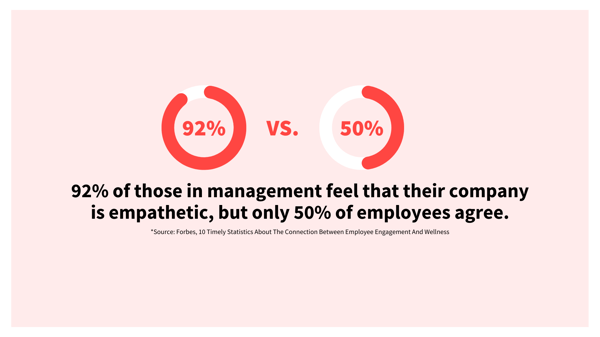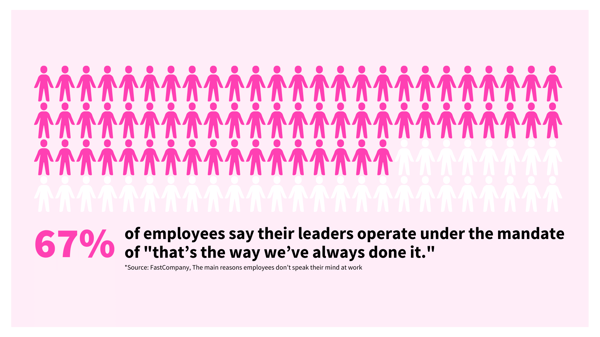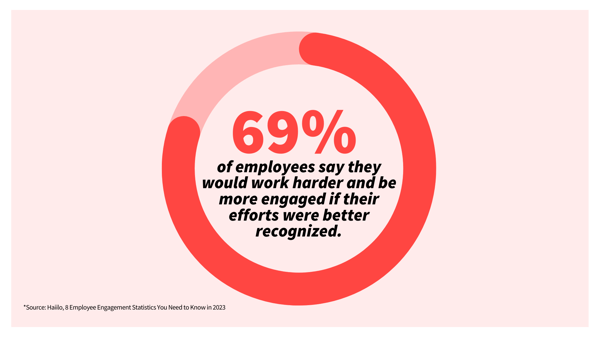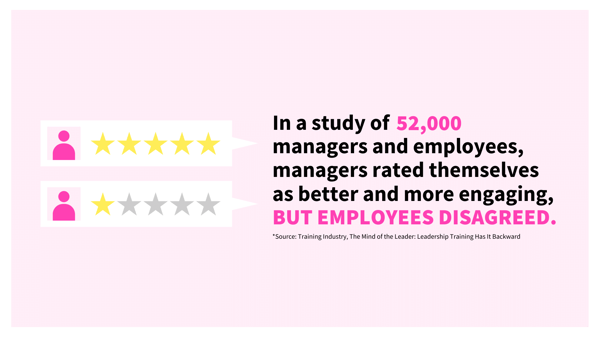7 min read
People Management in 2024: 21 Statistics Everyone Should Know
People management is all about one thing - people. It’s about ensuring the people in your charge have everything they need to do their job and do it...

For better or worse, the effectiveness, or lack thereof, of a leader impacts those in their charge. A Direct manager significantly affects an employee’s quality of work, well-being, attitude, engagement, and growth.
Yet, in some organizations, poor management goes unchecked, leading to some devastating consequences outlined in these 15 scary statistics about the results of bad management in the workplace.
There is a saying, “People quit bosses, not organizations,” and more often than not, this is true. Here are four statistics showing how poor management leads to employee turnover.
A study uncovered that 57% of respondents had previously left a job because of their leader. Not to mention, if they haven’t left yet, there is a high probability they are thinking about it, with 32% saying they have considered leaving a job due to poor management.
A prime example of poor management is a lack of recognition and appreciation, which costs companies dearly. 79% of employees quit their job due to a lack of appreciation.

A lack of empathy and bad management go hand in hand, yet, a whopping 96% of employees said that management showing empathy would make them want to stay with the company. Moreover, management thinks they’re doing a good job, with 92% saying they feel that their company is empathetic; meanwhile, only 50% of employees agree.
Employees want to be challenged, and if their leader is not finding them new projects, stretch assignments, and opportunities to learn and grow, they will go elsewhere, as 33% of employees said they left their job because they were bored at work and wanted a new challenge.
In times of VUCA, as we are experiencing today, where uncertainty is everywhere, employees look to their managers for a plan, direction, and reassurance. However, without leadership and communication training, many well-intentioned who try to lessen employees' stress and anxiety only end up exacerbating it.
In a report by two Stanford professors, they examined the relationship between workplace stressors and mortality claims. Their findings were astonishing. They found that over 120,000 deaths annually may be attributed to how U.S. organizations manage their employees. This doesn’t even account for the physical and mental toll an ineffective leader can take over a period of time.
Bad management is the largest source of stress for workers. Korn Ferry found that 35% of employees say their direct manager is their biggest source of stress at work.

“But that’s the way we’ve always done it!” Is there a more demoralizing statement a leader could say to an employee who dares to speak up and suggest something new? Yet, this is all too common in leaders with a closed mindset who are not continually learning and challenging themselves.
Since employees work day in and day out directly with customers, processes, and products, it can be devastating to work under a leader who is unwilling to consider or even listen to their ideas based on first-hand experience.

41% of employees agreed that management doesn’t value innovation, as the majority of respondents (67%) said that their leaders operate under the mandate of “that’s the way we’ve always done it.”
Almost half of all employees said they do not share their feedback or ideas for improvement because their leader never asked them for their input.
Sadly, the number one reason why employees don’t share their ideas is they’re concerned they won’t get credit for it. Nothing screams poor management like taking credit for employees' innovations and ideas.
As defined by Gallup, employee engagement is “the involvement and enthusiasm of employees in their work and workplace.” Simply, if engagement is low, so will the level of effort an employee puts toward their work, and the most significant influence on the level of engagement of an employee is their direct leader. Therefore, if there is poor management, there will be poor engagement.
Managers account for 70% of the variance in employee engagement scores, showing the most significant factor in employee engagement is the quality of their manager. And with only 33% of employees feeling engaged, there is much room for improvement in management.
82% of employees felt their managers were uninspiring. How can employees feel motivated and engaged at work if they’re uninspired by what they do?
69% of employees agree they would work harder and be more engaged in their work if they were better recognized.

It’s not surprising that bad management has a negative impact on the balance sheet as they influence and touch every aspect of an organization. These two statistics highlight the true cost of poor management.
When leaders do not have the skills to manage others, it costs organizations big time. It is estimated that poor management costs U.S. companies up to $550 billion annually.

Companies, where employees are engaged in their work, are 22% more profitable than their peers. With direct leaders being the biggest factor in an employee’s level of engagement, the case for fixing poor management is made.
How can you fix poor management if leaders don’t see a problem? This is a challenge many organizations face. Often, when there is poor management, there is also a lack of self-awareness, which perpetuates the problem.
In a study of more than 52,000 managers and employees, it was uncovered that leaders rated themselves as better and more engaging than their employees did.

Without the right skills, people managers cannot do their best for employees and the organization, which is often the leading cause of poor management. In many cases, poor management could be averted if they had access to leadership training. However, what is often the case is leaders are promoted and left to figure it out on their own.
This is unfortunate because it often leads to struggle, strife, failure, and disengagement, which could otherwise have been avoided if they were prepared to step into a management role. When Gallup asked employees what they thought of their direct leader, 82% agreed that their boss lacked leadership skills.
The path to move from poor management to effective management is competency development. With effective management skills such as accountability, inclusion, conflict resolution, empowerment, and sound judgment, management can see not only their direct reports succeed and rise but also themselves, their entire team, and the organization.
.png)
7 min read
People management is all about one thing - people. It’s about ensuring the people in your charge have everything they need to do their job and do it...

6 min read
Over the last couple of years, many aspects of management have changed, creating new challenges and requiring new skills, making the bar of being an...
.png)
4 min read
Imagine you walk into your annual performance review. You aren’t completely sure of what to expect, but you don’t expect anything major to come up....